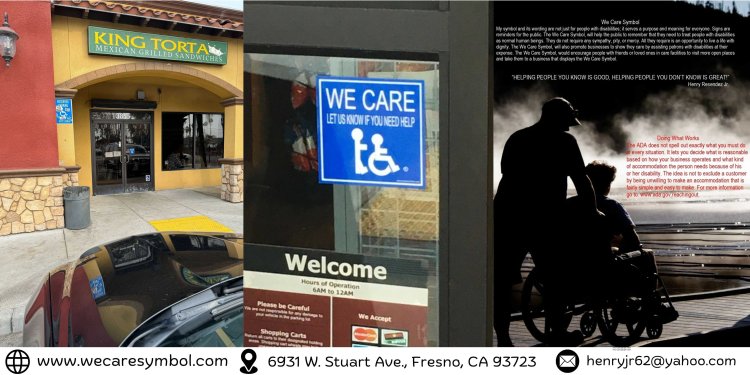Disabled Person Symbol and Disabled Signs Symbols: Meaning, Importance, and Usage
The disabled person symbol and disabled signs symbols are vital tools in creating an accessible and inclusive society.
Introduction
In today’s world, accessibility and inclusivity are more important than ever. The disabled person symbol and disabled signs symbols play a crucial role in ensuring people with disabilities can navigate public spaces with ease. These symbols not only provide guidance but also foster awareness about the importance of accessibility. In this blog, we will explore the meaning, significance, and various uses of these symbols.

What is the Disabled Person Symbol?
The disabled person symbol, also known as the International Symbol of Access (ISA), is a universally recognized icon that depicts a person in a wheelchair. It is commonly seen in parking spaces, restrooms, elevators, and public buildings to indicate accessibility for people with disabilities. The ISA was designed in 1968 and has since become the global standard for identifying areas and services dedicated to individuals with mobility challenges.
Evolution of the Disabled Person Symbol
Over the years, the symbol has undergone minor modifications to make it more inclusive and dynamic. Some modern versions show a more active figure in a wheelchair, promoting the idea that people with disabilities are independent and capable.
Importance of Disabled Signs Symbols
The presence of disabled signs symbols in public and private spaces is essential for multiple reasons:
-
Accessibility – These signs ensure that people with disabilities can easily locate accessible areas and facilities.
-
Legal Compliance – Many countries have laws requiring businesses and public places to display accessibility signs, ensuring compliance with regulations such as the Americans with Disabilities Act (ADA).
-
Inclusivity – The symbols foster a sense of inclusion by recognizing the needs of individuals with disabilities.
-
Safety – Clearly marked signs help prevent accidents and inconveniences by guiding individuals to designated areas.
Common Types of Disabled Signs Symbols
There are several types of symbols used to denote accessibility features:
1. Wheelchair Accessibility Symbol
-
Found in parking spots, ramps, restrooms, and elevators.
-
Indicates areas specifically designed for wheelchair users.
2. Hearing Impairment Symbol
-
Displays an ear with sound waves or a cross through it.
-
Indicates areas equipped with hearing assistance devices such as hearing loops.
3. Vision Impairment Symbol
-
Features an eye with a slash through it or a person using a cane.
-
Found in places offering Braille signs or assistance for visually impaired individuals.
4. Service Animal Access Symbol
-
Shows a person with a service dog.
-
Indicates that service animals are welcome in specific areas.
5. Cognitive Disability Symbol
-
A relatively newer icon representing people with cognitive or intellectual disabilities.
-
Used in facilities that provide additional support for individuals with autism, dementia, or learning disabilities.
Where to Find and Use Disabled Signs Symbols?
These symbols are found in various locations, ensuring accessibility and inclusivity. Some common places include:
-
Public Buildings – Government offices, hospitals, and community centers.
-
Transportation Hubs – Airports, train stations, and bus stops.
-
Workplaces – Offices and factories that accommodate employees with disabilities.
-
Educational Institutions – Schools and universities with special accessibility provisions.
-
Entertainment Venues – Theaters, stadiums, and theme parks.
How Businesses Can Implement Disabled Signs Symbols
If you own a business or manage a public facility, it is crucial to incorporate disabled person symbols correctly. Here’s how you can do it:
-
Ensure Visibility – Place signs at eye level and in well-lit areas for easy recognition.
-
Use High-Contrast Designs – Signs should have clear, contrasting colors for better readability.
-
Follow Legal Standards – Adhere to ADA and other local regulations to avoid penalties.
-
Educate Staff and Visitors – Make sure employees and customers understand the meaning and importance of these symbols.
-
Update When Needed – Replace worn-out or outdated symbols with modern, recognizable versions.
Conclusion
The disabled person symbol and disabled signs symbols are vital tools in creating an accessible and inclusive society. By understanding their importance and implementing them effectively, businesses and public spaces can ensure that everyone, regardless of ability, can navigate the world with ease. Prioritizing accessibility not only benefits people with disabilities but also promotes a more inclusive and compassionate community.
For more information on accessibility symbols and how they can enhance inclusivity.
What's Your Reaction?



















.jpg)
.jpg)

